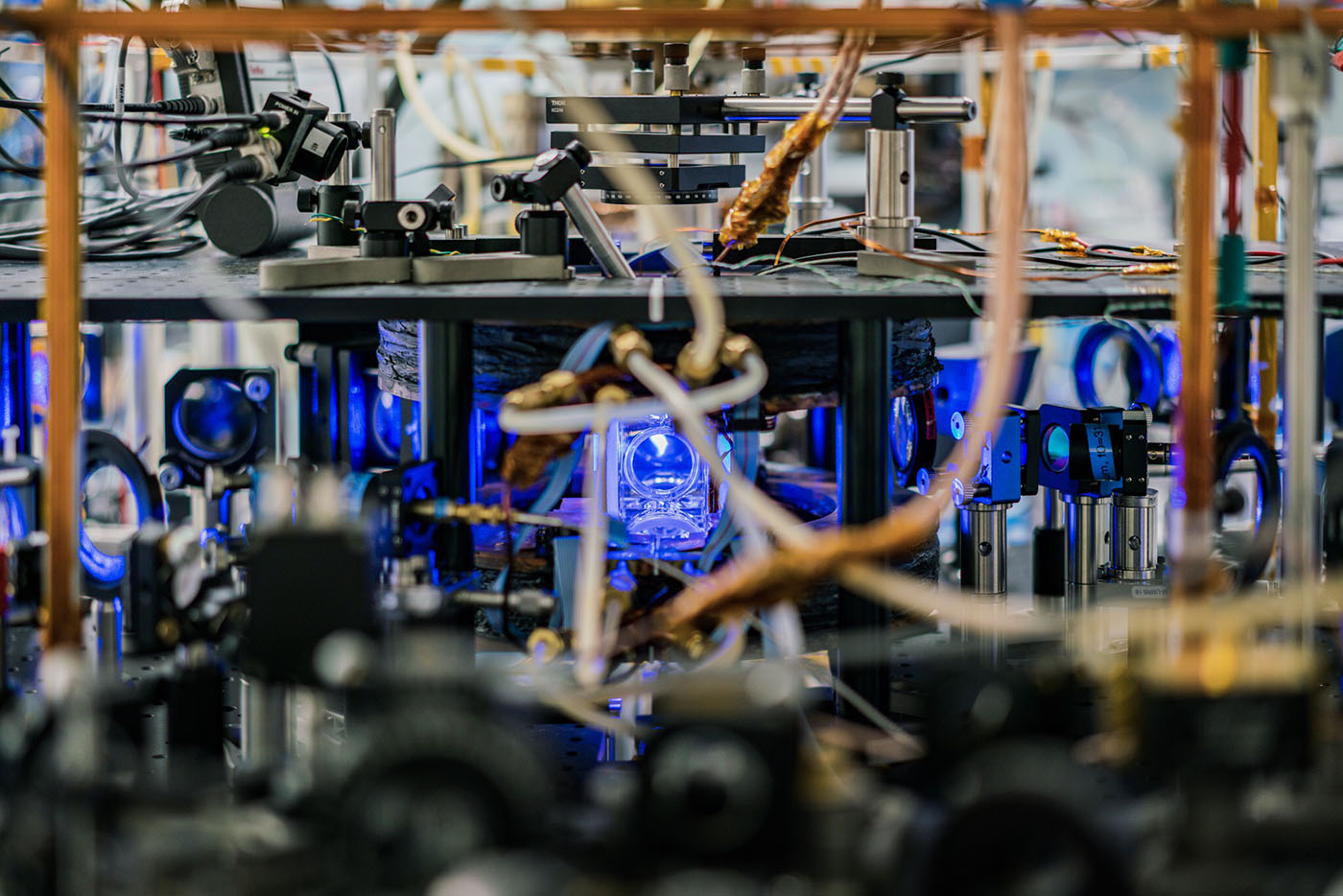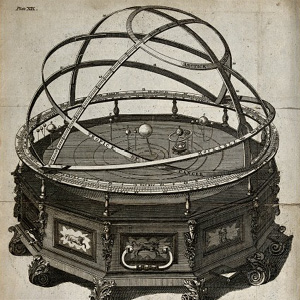Highlights
Experiments reveal new potential for cold atoms in quantum simulation
 Cold atoms in a laboratory could help answer outstanding questions in fundamental physics. The blue lasers in this image are cooling a cloud of strontium atoms for experiments by David Wilkowski’s group at the Centre for Quantum Technologies. Image: Alessandro Landra.
Cold atoms in a laboratory could help answer outstanding questions in fundamental physics. The blue lasers in this image are cooling a cloud of strontium atoms for experiments by David Wilkowski’s group at the Centre for Quantum Technologies. Image: Alessandro Landra.
CQT researchers have realized a quantum version of the famous ‘Foucault’s pendulum’ in a cloud of cold atoms – opening the door to simulation of fundamental phenomena in quantum physics. The approach also offers a sensitive way to measure the cloud’s temperature.
The research by the group of David Wilkowski, a CQT Research Associate Professor based at the Nanyang Technological University, was published 4 September in Nature Communications. The team worked with a cloud of some 10,000 strontium atoms (87Sr) cooled to near absolute zero, demonstrating a phenomenon precisely referred to as a ‘non-Abelian geometric transformation’.
Swings and roundabouts
Foucault’s pendulum is a staple exhibit of science centres worldwide. The direction in which a simple pendulum swings changes during the day, without the pendulum being touched. The effect is due to the rotation of the Earth. Imagine a pendulum at the North Pole: it swings in a fixed plane as the Earth rotates beneath it, making it appear, to someone on Earth, that the plane of motion of the pendulum precesses. This effect appears for a pendulum suspended freely anywhere except on the Equator.
In the quantum world, the same kind of precession can occur in the ‘state vector’ that describes the properties of quantum system. In the experiments in David’s group, the team are looking at the orientation of the atoms’ spin. The phase of laser light shone onto the atoms acts something like the Earth’s rotation, causing the spins to precess.
What’s more, the quantum effect has a feature not found in the classical world. In certain circumstances, the transformations of the atom spins can be ‘non-Abelian’. This means that a given set of laser operations will cause a transformation that depends not just on their order, but also on the system’s starting point.
“It is like finding the precession of a Foucault’s pendulum to be different if you start the measurement at 9am as opposed to 4pm. This is a genuine quantum effect without any classical counterpart,” explains David. The Earth’s constant rotation means a Foucault pendulum has a fixed rate of precession.
In the group’s setup, the strontium atoms are first cooled to a temperature about one millionth of a degree above absolute zero, around -273°C. The researchers then turn on a trio of red lasers that interact with some of the atoms’ internal energy states.
“Everything comes from a precise external control of the relative phases of the lasers,” explains David. The team arrange the atoms to behave like they each have just two quantum states, which are linear combinations of their original ground states. The system is then equivalent to an ensemble of spin-1/2 particles, for which the spin can be rotated without any cost of energy.
The team monitored the spins as they changed the phase of the lasers, confirming that the transformations had non-Abelian character. Other atoms would also show this effect if they have comparable energy level structures.
An interesting outcome is that the atoms change their spin orientation as they move a distance comparable to the wavelength of the laser, just a few hundred nanometers. This gives a method to measure temperature, by revealing the speed velocity distribution of the atomic cloud. The team needed just tens of microseconds to determine the cloud’s temperature – up to a thousand times faster than a conventional approach. This thermometric method is promising to measure ultra-low temperatures or position-momentum correlation where conventional methods are less sensitive or don’t work.
Future directions
“This is only the beginning of the story. Many fascinating experiments and applications are within our reach,” says David. He did the work with team members Frederic Leroux, Kanhaiya Pandey and Riadh Rebhi, now alumni, along with Christian Miniatura, Benoit Gremaud and collaborator Frederic Chevy at the Laboratoire Kastler Brossel in Paris. Many of the group are also members of the MajuLab, a joint research unit of French and Singaporean partners.
In particular, the scheme offers a way to simulate ‘gauge field’ structures such as two-dimensional spin-orbit coupling, relativistic trembling motion (Zitterbewegung) and magnetic monopoles. To observe those phenomena, the strontium gas needs to be further cooled to bring the temperature to around 10 trillionths of a degree. The team is working to achieve this.
In recent years, other research teams have achieved a slew of results simulating materials in cold atoms trapped in optical lattices. In this approach, the gauge field can only take discrete values relating to the hopping of atoms between lattice sites. David’s group does not use a lattice, allowing continuous tuning of the effective gauge field. This will give more flexibility in designing simulations.
Learn more
Related Stories
 | Review seeks path to successful quantum simulations July 31 2014 |
France-Singapore collaboration in quantum renewed February 06 2018 | |
 | Atoms cooperate to emit sequence of 'superflashes' January 25 2016 |






